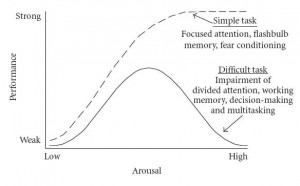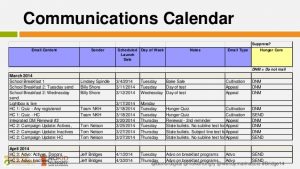 By Andrew Sheridan, Published November 5, 2014
By Andrew Sheridan, Published November 5, 2014
Email performance metrics are something that all markers should be measuring and reporting on. Any decent email marketing platform readily tracks these statistics for you in order to show you exactly how your email is performing. Email metrics are grouped into two categories: engagement and deliverability. Engagement metrics include open rates and click rates. These define whether a member of your email list is interacting with your mailing or ignoring it. Deliverability metrics are soft bounces and hard bounces. These are the emails that never make it to the recipients inbox either because the email address is invalid, the recipient’s server has blocked your server, the recipients mailbox is full, or the server is down.
After a recent analysis of our email campaigns, data from our monthly newsletter caught my eye. Our mailing list had been continuously growing over the past year and our engagement rates were shrinking. A couple months ago, we trimmed our newsletter list and engagement rates skyrocketed. Cleaning our list also improved our deliverability: both soft and hard bounces rates dropped drastically. Knowing how and when to clean your list can be crucial, and the effects are noticeable.
Why Email Metrics Matter
Now you may be thinking – so what if they never open my email, isn’t it still beneficial for them to see my brand’s name in their inbox? The reason this isn’t true is because of the Internet service providers (ISPs) and the spam filters they maintain. The worldwide spam rate in 2013 was reported at 69.9 percent of emails with 3.2 percent of emails containing malicious attachments (ZDNet). If you think about it, there is no way that seven out of ten emails in your inbox are spam. This is because the ISPs already do an extraordinary job of keeping these spam emails from ever getting to you.
When engagement and deliverability rates fall too low, this causes more ISPs to filter you out of their inboxes and put you into a spam filter. If your emails hit this spam filter too many times, or are reported as abusive too many times, the ISP may begin to block your server altogether. Maintaining strong email performance is key to keeping your emails out of the ISPs spam filters, and cleansing your list of the unengaged is one of the best ways to do this.
Defining the Unengaged and Removing Them From Your List
In order to clean up your distribution list, you have to come up with your definition of unengaged. Depending on your email platform, you likely have various ways of determining engagement. Your email platform should automatically remove email addresses that hard bounce from your list as well as remove those that repeatedly soft bounce. Email engagement is usually measured by the frequency of a recipient’s interaction with your emails through opens and click-throughs. If you use a marketing automation platform, you likely can add website visits, pages views, form fill-outs, and more to your engagement standards.
Engagement is further measured by time. The frequency of your email blasts determines the length of time people have to be unengaged for them from your list. The less frequent your mailings, the longer amount of time they should be unengaged for.
Prove Email Effectiveness with Better Performance
Email marketing can be an extremely useful tool for your business–just not if your emails end up in the spam filter. By removing those you deem as unengaged from your email distribution lists, you can boost the email metrics that you report on. With metrics that more accurately depict how successful your emails really are, you can prove more clearly the impact they have on your business.
Knowing which emails perform best can be extremely helpful for your future email marketing. Engagement rates, however, are just the start for successful email performance tracking. Another outstanding way to measure email performance is with call tracking. Due to the rise of smartphones, 88% of people now check their emails daily on a mobile device (Return Path Report, May 2012). Smartphone users want the option to call your company for information instead of going to the web. By adding call tracking numbers to emails and by using call tracking to tell if someone who visited your landing page or web site from a specific emails eventually called you, you can measure every conversion that your emails are driving, not just the online ones. To learn more about tracking phone calls from emails, read our white paper: The Definitive Guide to Call Tracking for Email Marketing.
Business Articles | Business 2 Community
(326)







